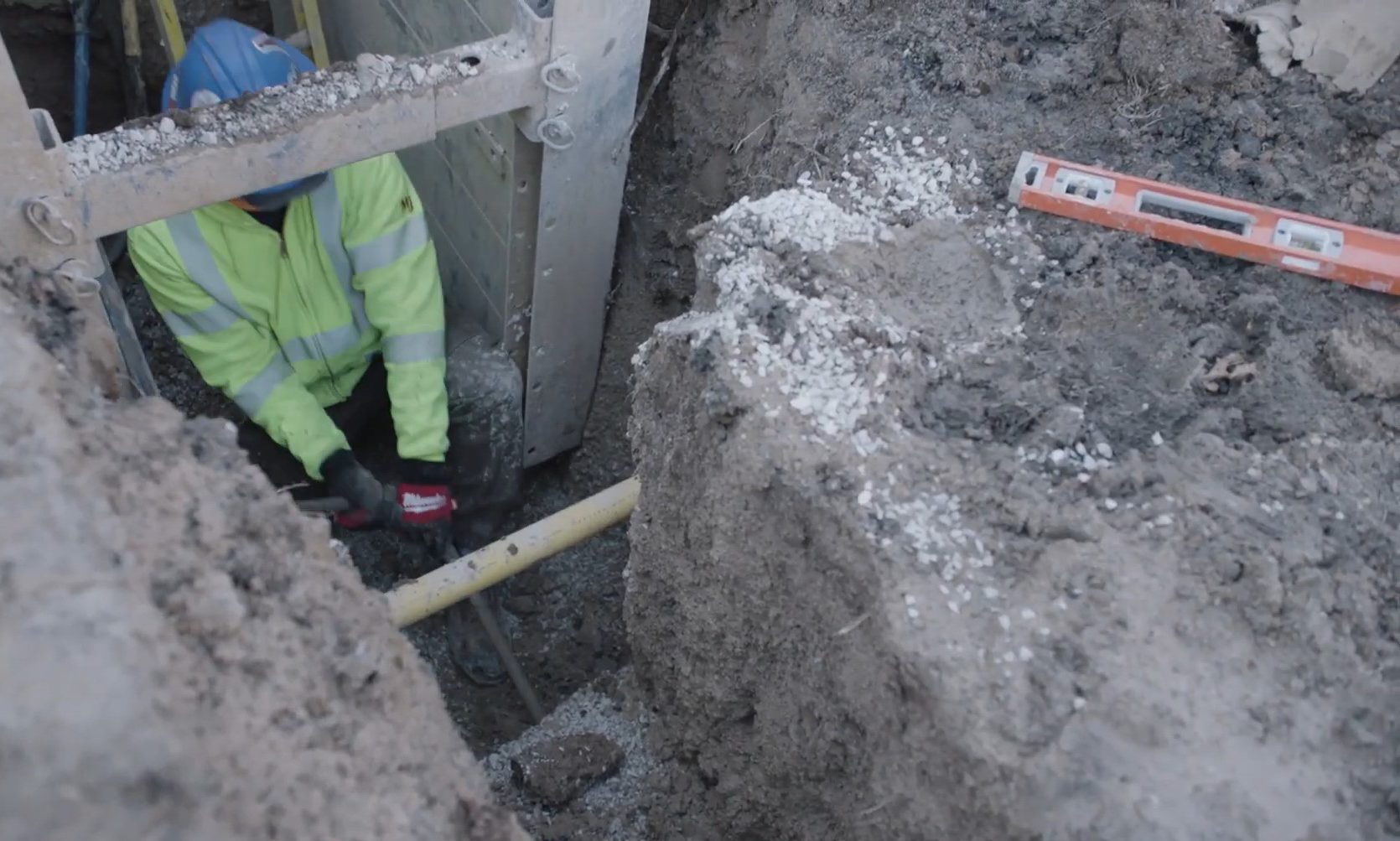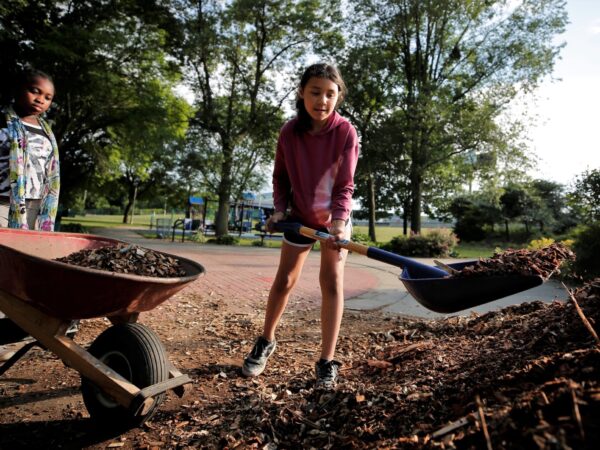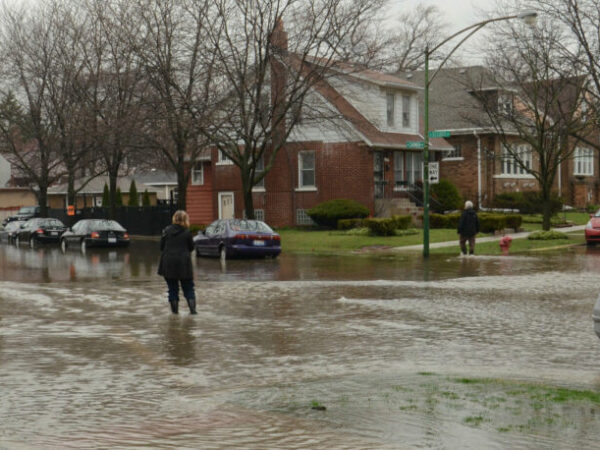
Drinking water systems in small and more diverse communities nationwide are less likely to receive state funding through the Environmental Protection Agency’s Drinking Water State Revolving Fund, according to a recent report.
Through the fund, the EPA awards grants to each state and the states add a 20% match, according to the agency. The money is distributed to communities, most often as a loan, to fund drinking water system projects like improving water treatment, improving sources of water supply and fixing pipes. When the loans are repaid, the money and interest go back into the fund to be used for future loans.
“Federal funding for water infrastructure is necessary when there are not the resources within the community to pay for the investments,” said Katy Hansen, co-author of the report. “It plays a very important backstop role in ensuring that all residents in this country have access to safe drinking water.”
The report used data from 2011 to 2020 and might be the only systematic analysis of who is benefiting from the fund since the program started in 1996, said Hansen, who is also the senior advisor for water at the Environmental Policy Innovation Center.
As of 2019, the fund had provided over $41 billion to support community water system projects, according to the Environmental Protection Agency.
The bipartisan infrastructure bill recently passed in Congress includes a potential additional investment of $55 billion into clean drinking water and water infrastructure across the nation.
But any funding through the Drinking Water State Revolving Fund is more likely to end up in larger communities with larger proportions of white residents, according to the report from the Environmental Policy Innovation Center and the University of Michigan Water and Climate Policy Lab.
Communities with lower household incomes are just slightly more likely to receive assistance, but Hansen said she hopes that will change in the future.
“From a justice and equity standpoint, we’d like to continue to tip the scales to make it that low-income communities were much more likely, or much, much more likely to receive funds,” she said.
To help combat these disparities, the authors recommend providing more assistance to communities that might struggle to apply, prioritizing communities with high poverty rates and requiring states to track the demographics of the communities with funded projects.
They also recommend increasing the number of additional subsidies given to low-income and high-poverty communities, like principal forgiveness, grants or negative interest loans. Only 26.6% of the total assistance was given as additional subsidies for disadvantaged communities even though the maximum amount allowed by the federal government is 35%.
And if more money does come to the program through an infrastructure bill, Hansen recommends states keep the current amount of money in circulation as loans to grow the revolving funds and use the money from the bill to provide more grants and principal forgiveness to communities that need it.
Principal forgiveness is a loan that communities don’t have to pay back or only partially pay back.
The principal forgiveness option was greatly underutilized in Michigan in the past, said Kelly Green, the water infrastructure financing administrator for the Michigan Department of Environment, Great Lakes and Energy. But they’ve been gradually increasing the amount of principal forgiveness given over the past few years.
“In fiscal year 22, not only are we hitting our max (limit), but we’re also utilizing some money that was remaining in fiscal year 2018 and 2019,” Green said. “And we’re awarding that as principal forgiveness, as well.”
But that means the money won’t come back into the system to fund future projects.
Though they are giving the maximum amount now, there will come a point when the amount they can give out will be greatly reduced unless they receive additional money from the state or federal government, Green said.

Lead pipes being replaced (Great Lakes Now Episode 1025)
Wisconsin gives fewer subsidies but helps more communities
The report’s authors collected data from the National Information Management System on the number of additional subsidies given out and the number of drinking water systems that received funding in the last decade for the eight Great Lakes states.
At 31.2%, Michigan gave the highest percent of additional subsidies of the total allowed by the federal maximum. Michigan is followed by Minnesota (26.7%), Wisconsin (15.2%), Pennsylvania (14.6%), Ohio (8.5%), Illinois (7.0%), Indiana (6.6.%) and New York (5.2%). Up until a few years ago, Wisconsin was almost giving out the maximum principal forgiveness allowed, said Becky Scott, the environmental loans project management section chief for the Wisconsin Department of Natural Resources.
They had to start offering less to give the fund time to grow.
“Giving out principal forgiveness has a big impact in terms of slowing down the growth in the size of the fund since it’s not paid back,” Scott said. “But I think it could work.”
Her department is working on updating the process for determining which communities receive principal forgiveness to capture where the true need is.
Wisconsin overtakes Michigan when it comes to the percent of total community water systems that received an award from the state revolving fund. Michigan has the lowest percentage (2.2%) followed by Pennsylvania (3.1%), Minnesota (5.2%), New York (5.8%), Illinois (8.2%), Wisconsin (8.4%), Indiana (10.7%) and Ohio (16.7%).
Green said she thinks the percent of systems receiving an award in Michigan is low for a few reasons — some smaller communities can get grants or better deals from other programs, there is a large upfront cost to the program and community hesitancy to take on debt.
They recently ramped up their marketing and outreach for the revolving fund program and now have more requests for money than they have money to give, Green said.
Wisconsin is also doing more outreach. Many of the regional DNR officers advise communities that can apply to the program, Scott said. But it all depends on who applies.
Recently, they haven’t had any years where they couldn’t fund an applicant, she said. Like in Michigan, some projects find funding from other programs or pull out when they don’t receive principal forgiveness.
A question of demographics
The report’s authors were not able to find data on the demographics of the communities receiving financial assistance from the revolving funds in any of the Great Lakes states. But Green said she thinks the report was “spot on” about the disparities in the program.
“These are challenges that I think we recognize,” she said. “And we’re trying to put new processes in place to try and help alleviate some of the problems.”
One thing Green’s department is trying to change in Michigan’s program is how disadvantaged communities are determined.
“This language was probably written 20-plus years ago,” Green said. “And it was one of the big drivers in trying to make changes to the legislation because we recognize it doesn’t speak to environmental justice situations. It doesn’t really speak to affordability issues.”
In the end, the Drinking Water State Revolving Fund is still important and provides the essential service of drinking water, Hansen said.
“It’s a great program,” she said. “We find some encouraging results here that this program is doing well and some opportunities to make some tweaks to ensure that the communities that most need the funds will receive them.”
Catch more news on Great Lakes Now:
Water Access: As moratoria on shutoffs end, old problems return to the forefront
Q&A: Climate, equity and diversity top priorities for new national non-profit executive
Coastal Concerns: Communities lack skilled staff and funding to tackle erosion and flooding
API key not valid. Please pass a valid API key.Featured image: Filling glass with water from faucet (Great Lakes Now Episode 1025)




